13 Budget-Friendly Tools Every Gardener Should Own
Gardening doesn’t have to be expensive to be effective. With the right tools, you can maintain a beautiful garden without breaking the bank. From trowels to pruning shears, there are plenty of affordable options that help you get the job done efficiently. In this guide, we highlight some of the most recommended tools by professionals that offer great value and performance for your gardening needs. Whether you’re planting, weeding, or maintaining your space, these budget-friendly tools will make the job easier and more enjoyable.
This post may contain affiliate links, which helps keep this content free. Please read our disclosure for more info.
Trowel
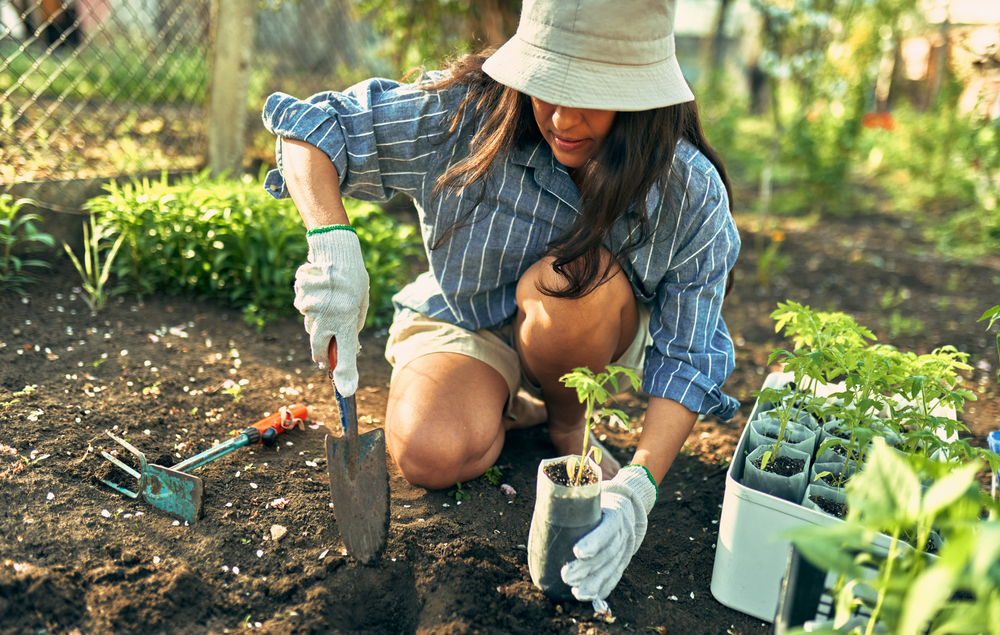
A trowel is one of the most basic yet essential tools for gardeners. Its pointed blade makes it perfect for digging small holes, planting bulbs, and moving soil. Landscapers often recommend a trowel for tasks like planting flowers, transplanting seedlings, and mixing in fertilizers or compost. The compact size ensures it can easily be used in tight spaces, such as around existing plants or in raised garden beds. A durable, rust-resistant blade is key for long-lasting performance, and many trowels feature ergonomic handles to reduce hand fatigue during use.
This tool is particularly appreciated for its versatility. Whether you’re planting a new garden or simply shifting soil for better aeration, the trowel’s straightforward design allows for precision and ease. Its affordability, lightweight nature, and effectiveness make it a top choice for both beginner gardeners and seasoned professionals.
Hand Rake
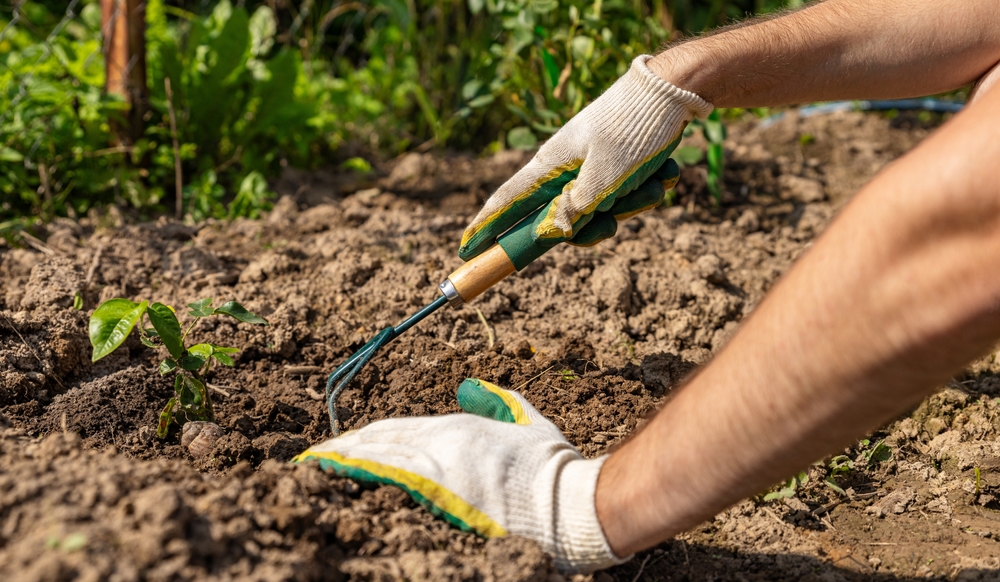
Hand rakes are indispensable when it comes to cleaning up small areas. Landscapers often use them to clear away leaves, weeds, or other debris from flower beds, vegetable patches, and between delicate plants. Their small size and multiple prongs allow for easy maneuvering in tight spaces, making them far more precise than larger rakes. The rake’s gentle teeth work well for loosening soil without disturbing established plants or delicate roots, which is especially important when working with flowers or low-growing herbs.
The lightweight and compact design of hand rakes makes them easy to handle, even during long gardening sessions. With a durable, rust-resistant metal head and an ergonomic handle, this tool offers both durability and comfort. For gardeners looking for a budget-friendly solution that performs well for cleaning and light soil maintenance, a hand rake is an excellent choice.
Pruning Shears

Pruning shears, or secateurs, are essential tools for keeping plants tidy and healthy. Landscapers often use them for trimming dead or overgrown stems, shaping bushes, and removing spent flowers. Their sharp blades allow for clean cuts, reducing the risk of damaging plants. A good pair of pruning shears will cut through twigs and small branches with ease, ensuring that your plants are properly maintained without causing unnecessary harm.
In addition to their primary function of pruning, shears are versatile tools for cutting back perennials, thinning out dense shrubs, or even harvesting herbs. Most landscapers prefer lightweight models with non-slip handles to minimize hand strain, especially during long trimming sessions. With their affordable price and wide range of uses, pruning shears are a must-have tool for anyone looking to maintain a well-groomed garden.
Shovel
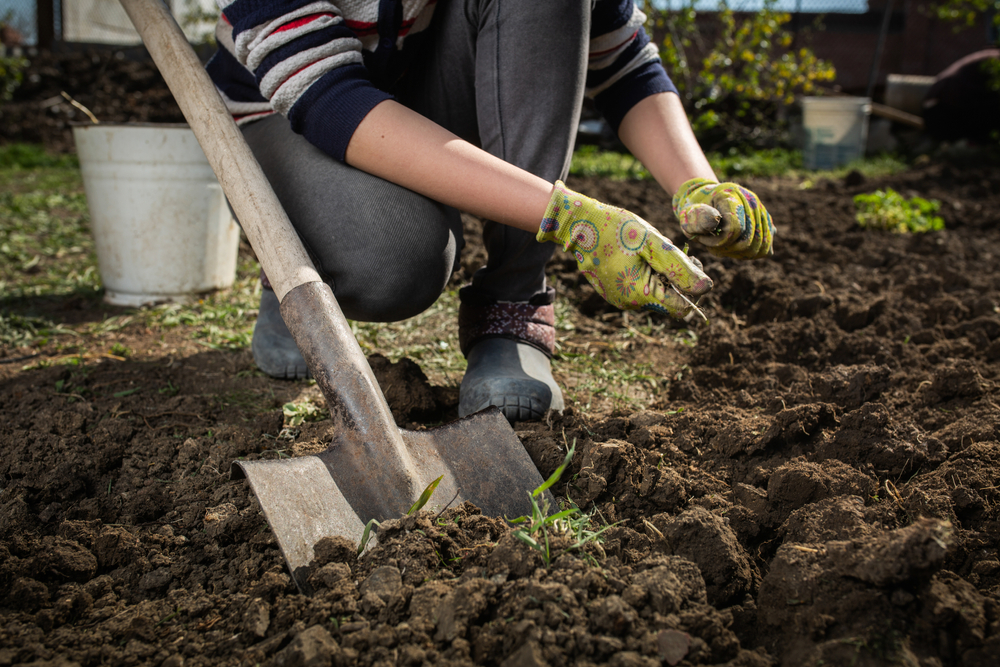
A shovel is an essential gardening tool for tasks like digging, lifting soil, and moving materials such as compost or mulch. Landscapers rely on shovels for a variety of tasks, from planting large shrubs to creating garden beds or pathways. A well-designed shovel has a pointed blade, making it easier to penetrate the ground, and a sturdy handle to provide leverage. The durability and strength of a shovel make it a go-to tool for larger digging projects, where smaller tools might not be as effective.
Although it may seem like a more basic tool, the shovel is indispensable for any serious gardener. It helps in preparing soil for planting, mixing in soil amendments, or even moving potted plants. For its relatively low cost and wide range of uses, the shovel is considered a necessary investment for both beginners and seasoned gardeners.
Garden Gloves
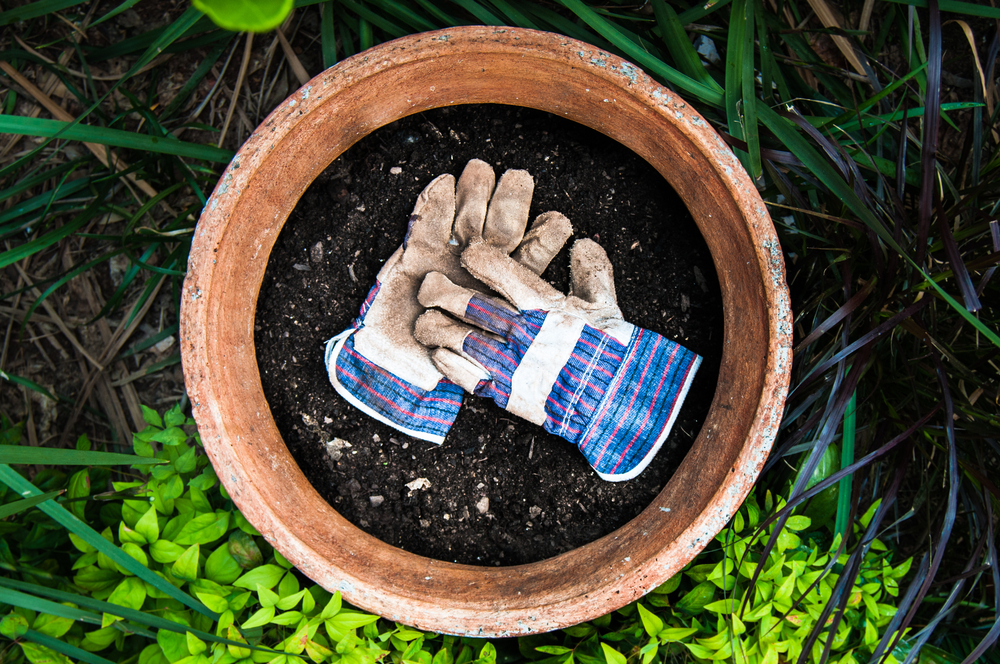
Garden gloves are a must-have for protecting your hands during gardening tasks. Landscapers recommend gloves to shield your hands from dirt, cuts, blisters, and thorny plants. High-quality gloves are made from durable materials like leather or cotton with rubberized palms for better grip. They are essential for a variety of gardening tasks, from planting to pruning, and can protect your hands from harmful chemicals or pesticides.
Gloves come in various sizes and designs, making it easy to find a pair that suits your specific gardening needs. In addition to their protective qualities, many gloves offer flexibility, allowing gardeners to perform detailed work without sacrificing comfort. An affordable pair of garden gloves helps ensure a safer, more enjoyable gardening experience, especially when working with tough plants or during long hours in the garden.
Hand Fork
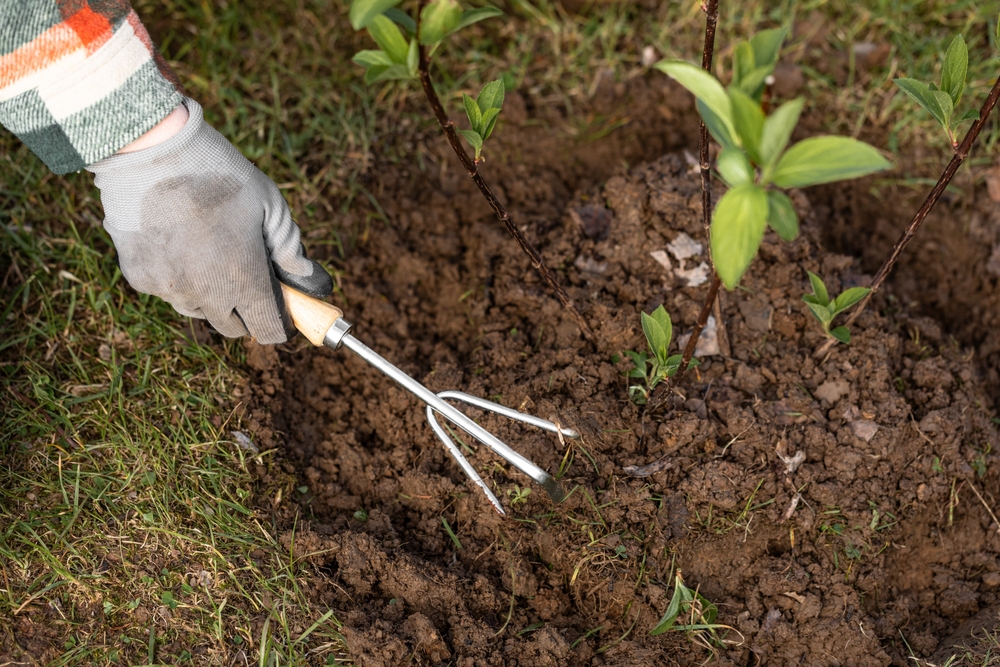
The hand fork is a small, multi-pronged tool ideal for breaking up soil, loosening compacted earth, or aerating garden beds. Landscapers recommend this tool for weeding, as its prongs can easily reach between plants and pull out stubborn weeds without disturbing the surrounding soil too much. It is especially useful for loosening compacted soil in small areas, ensuring that air and nutrients can reach plant roots more effectively.
Its compact design makes it highly maneuverable and perfect for tight spaces like raised beds or small flower pots. Despite its small size, a hand fork can handle a variety of tasks, from cultivating soil to mixing in compost. For gardeners looking to perform delicate work in confined spaces, this inexpensive tool provides great value and functionality.
Hoe
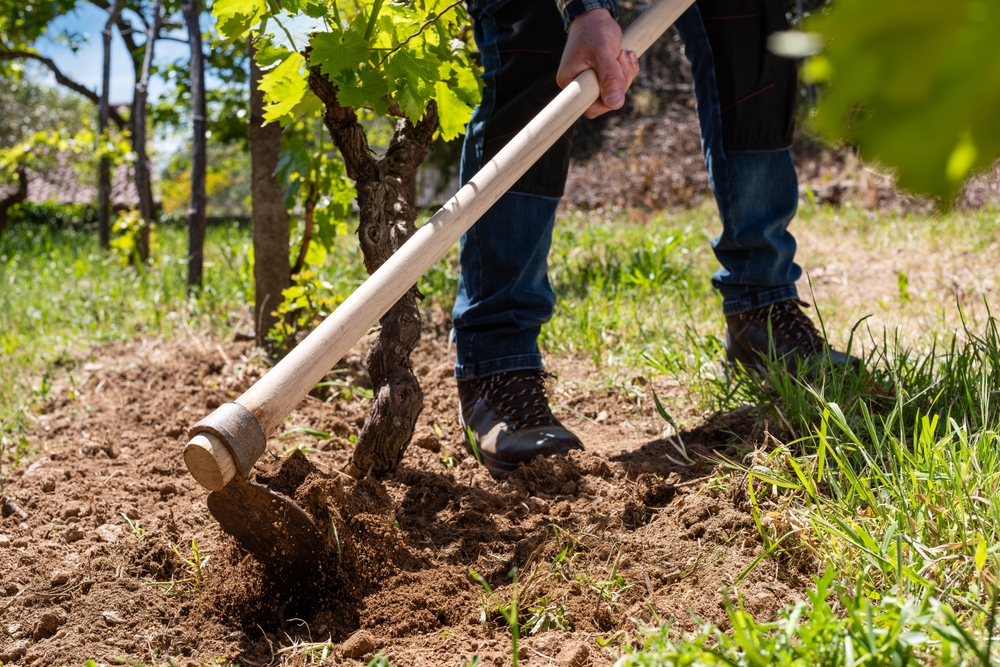
A hoe is an essential tool for weeding and cultivating garden soil. Landscapers use hoes for tasks like breaking up soil clumps, removing weeds, and creating furrows for planting seeds. With a long handle and a flat blade or angled head, the hoe allows for effective control while minimizing back strain, as gardeners can work from a standing position. This tool is especially helpful for larger garden spaces, where bending over to pull weeds can be time-consuming and tiring.
A hoe’s versatility extends to tasks such as mulching and trenching. For gardeners who want a basic tool to maintain their soil and keep weeds in check, a hoe is a perfect addition to the toolkit. Its affordability and effectiveness make it a staple for landscaping professionals and hobby gardeners alike.
Garden Kneeler
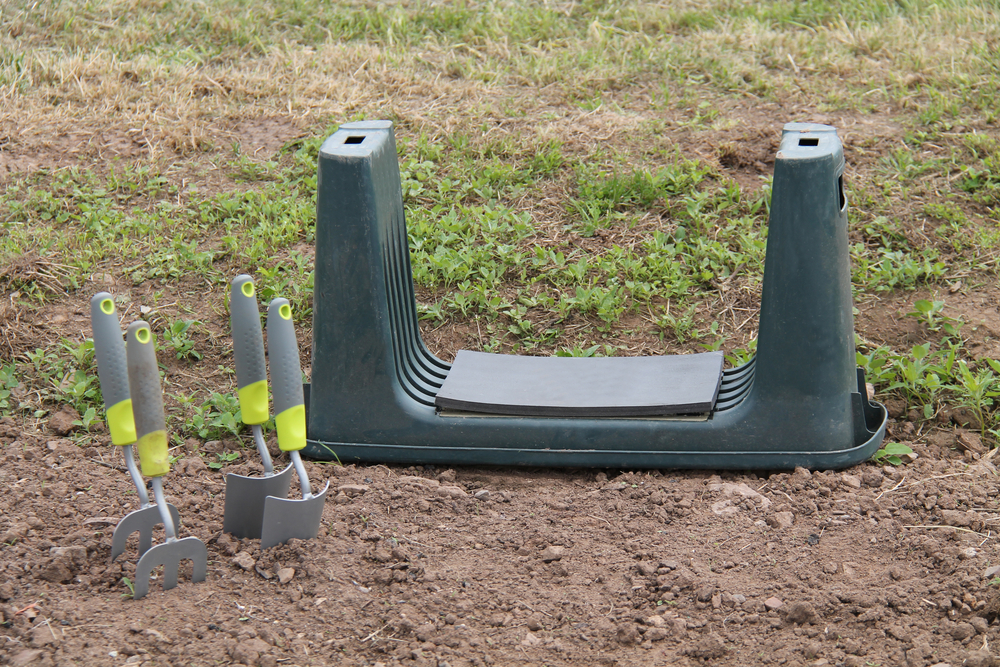
A garden kneeler is a simple yet effective tool for providing comfort during gardening tasks that require kneeling. Landscapers recommend this tool for tasks like weeding, planting, and pruning, as it helps reduce the strain on knees and back. A well-padded kneeler offers cushioning, making it easier to work at ground level for extended periods. Some kneelers are designed with handles, making it easier to stand up after kneeling, which is a great benefit for people with mobility issues.
While not as commonly recognized, a kneeler can improve comfort and productivity, especially for gardeners with limited flexibility. It also serves as a convenient seating option when flipped over, allowing for short breaks during long gardening sessions. For the low price, this tool offers significant relief and support during physical gardening tasks.
Watering Can
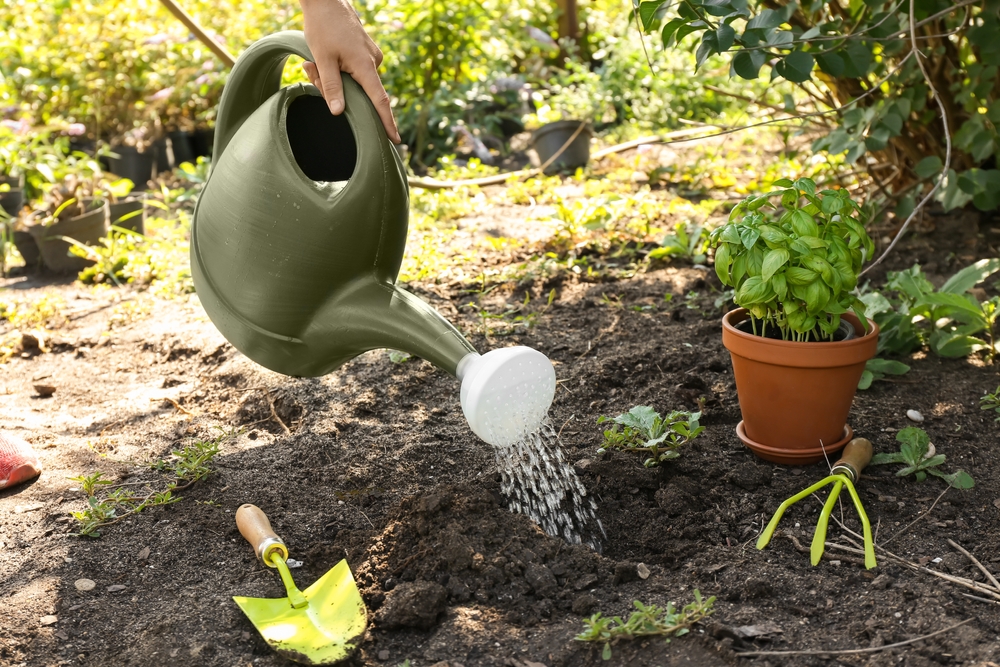
A watering can is essential for keeping plants hydrated, especially in smaller gardens or during dry spells. Landscapers recommend a well-designed watering can with a long spout for precise watering, as it allows gardeners to direct water exactly where it’s needed. Some models feature a detachable spout or a built-in nozzle for different watering needs, making them more versatile for various plant types, from delicate seedlings to established perennials.
The simplicity and low cost of watering cans make them an accessible choice for all gardeners. They are also portable and easy to store, providing a convenient way to water plants without the need for hoses or complicated irrigation systems. Whether you’re watering potted plants on a patio or small garden beds, a watering can offers great flexibility and is essential for maintaining healthy plants.
Garden Fork
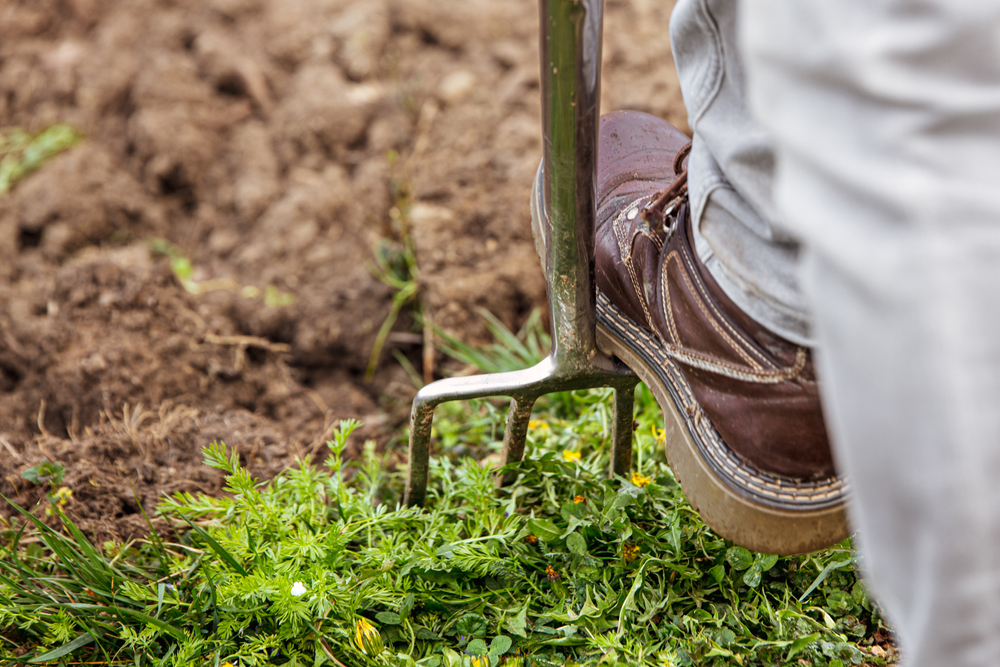
Garden forks are similar to hand forks but with longer handles and larger, sturdier tines. Landscapers use garden forks for breaking up soil, turning compost, and aerating garden beds. The strong tines allow gardeners to work through dense soil or loosen compacted earth with ease. This tool is particularly useful for heavy-duty tasks that require more force, such as working in clay soils or turning mulch.
The ability to use a garden fork for multiple tasks, including moving compost or mixing in fertilizers, makes it a valuable addition to any gardener’s toolkit. For its affordability and versatility, the garden fork remains a go-to tool for maintaining healthy, well-aerated soil.
Edging Tool
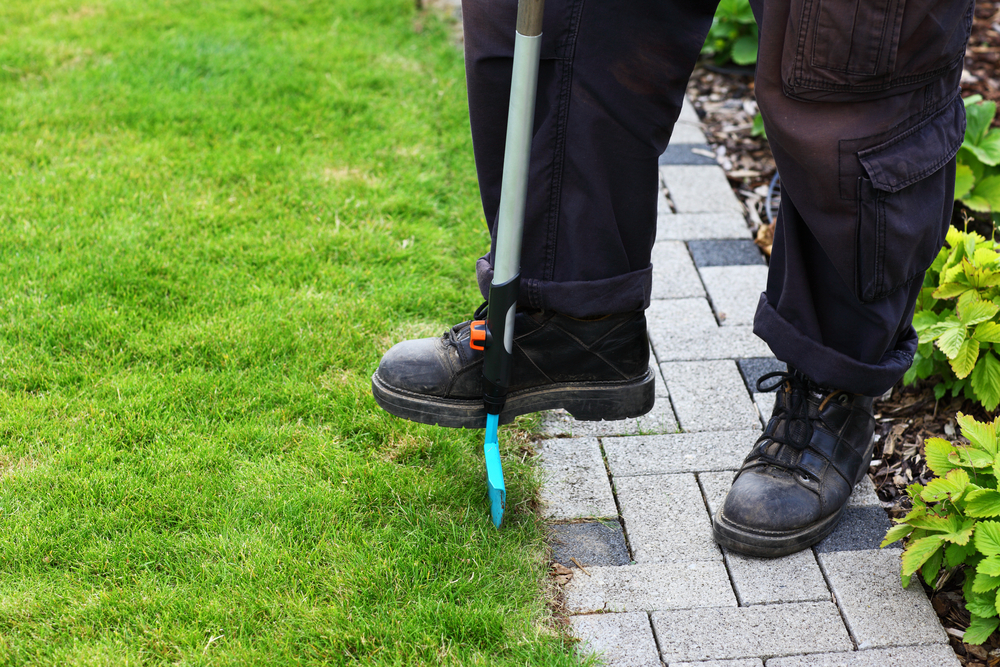
An edging tool helps create neat borders around garden beds, lawns, and pathways. Landscapers prefer these tools for their precision in cutting through grass or soil, ensuring that garden beds have clear, defined lines. The sharp edge of the tool slices through turf or weeds, making it easier to create and maintain clean edges, which is essential for a well-kept garden.
Although simple, the edging tool adds a polished look to any garden design. It can be used for small tasks like tidying up the borders of flower beds or for larger projects involving hardscaping and lawn care. This affordable tool helps gardeners achieve a neat, professional finish with minimal effort.
Wheelbarrow
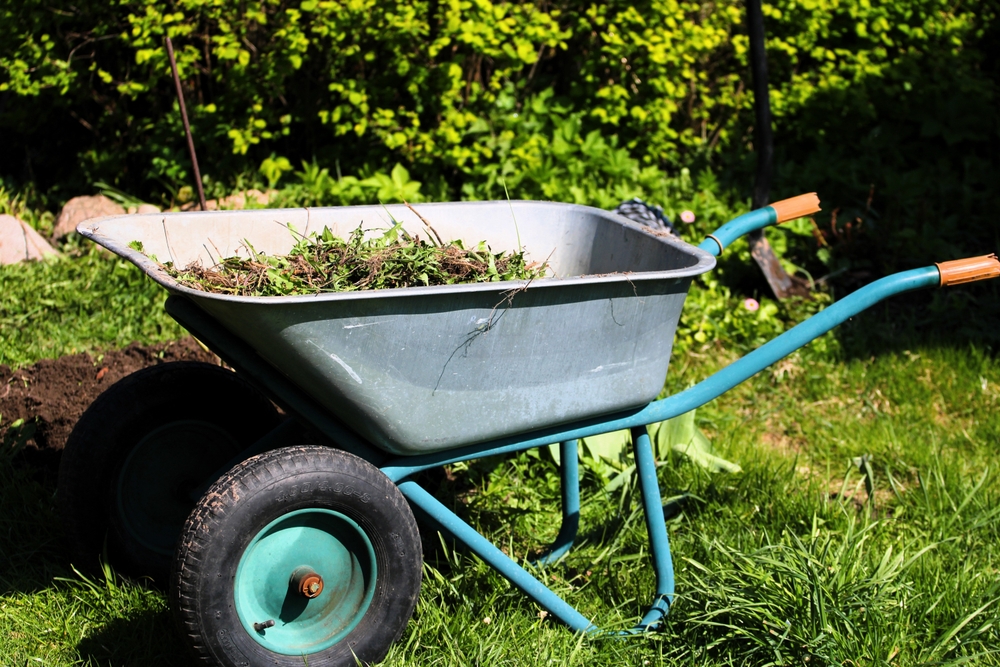
A wheelbarrow is invaluable for transporting soil, compost, mulch, or tools around the garden. Landscapers recommend wheelbarrows because they make heavy lifting and moving materials much easier and less strenuous. With a large, open tray and a single wheel, a wheelbarrow is easy to maneuver, even in tight spaces. Its sturdy design ensures that gardeners can move large loads at once, saving time and effort.
Although the initial investment may be slightly higher than some other tools, a wheelbarrow’s practicality and durability make it worth the cost. For anyone dealing with heavy gardening tasks, it is an indispensable item that can make large projects much more manageable.
Garden Scissors
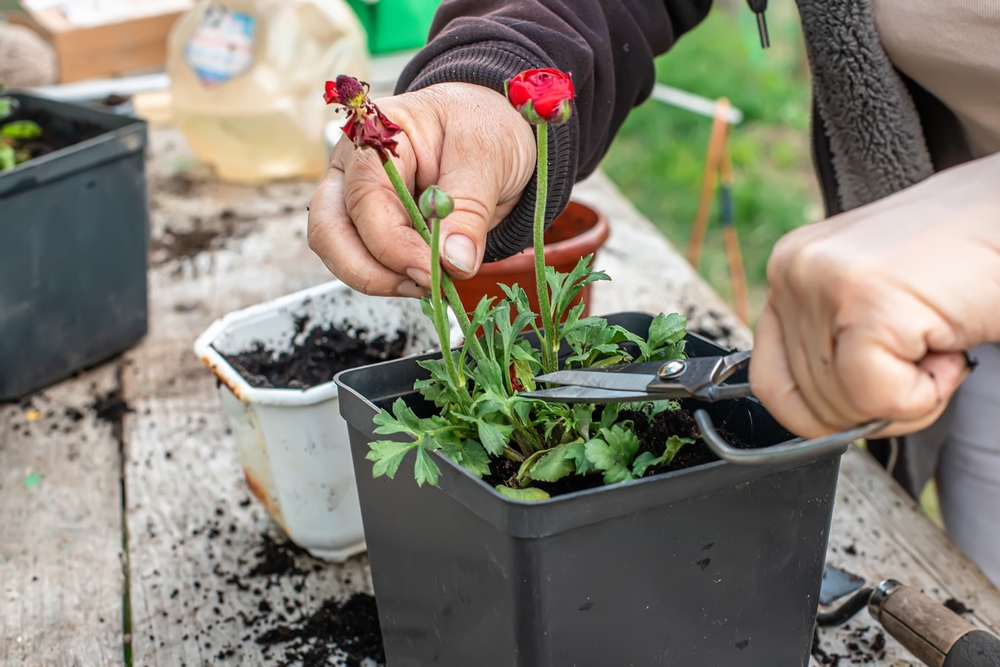
Garden scissors are perfect for precision cutting and trimming in the garden. Landscapers use them for snipping flowers, herbs, and small stems, as their sharp blades allow for clean cuts without crushing delicate plants. Unlike pruning shears, garden scissors are lightweight and easier to handle for small jobs that require detailed work. This makes them ideal for cutting fresh flowers or performing minor maintenance on plants without causing unnecessary stress.
The affordable price and ease of use make garden scissors a great option for everyday gardening tasks. They are especially helpful for those looking for a quick and efficient way to manage smaller plants or herbs in the garden.
This article originally appeared on Avocadu.
